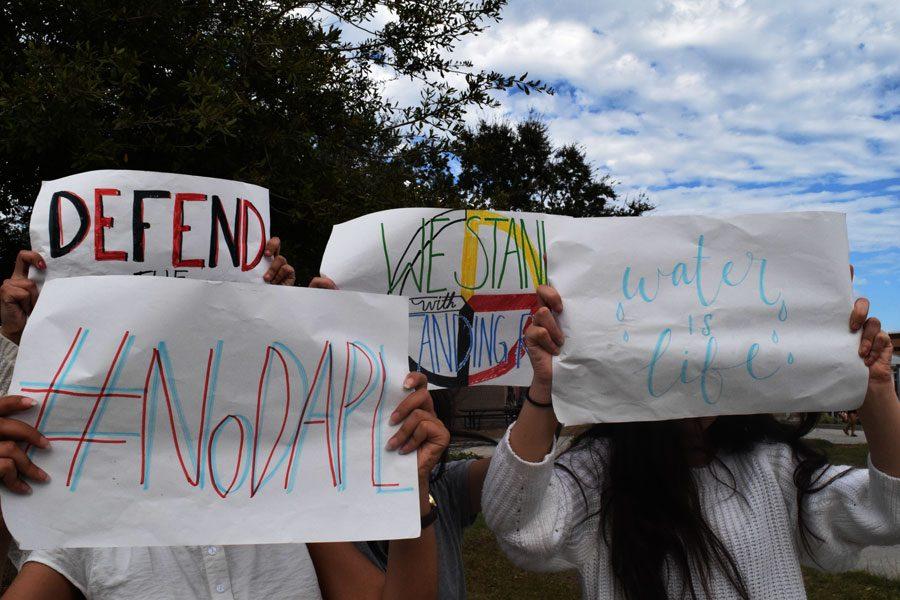DAKOTA ACCESS PIPELINE PROTESTS FIND A SOLUTION
December 6, 2016
On the Standing Rock Reservation in North Dakota, thousands are fighting for clean water, a seemingly easy right to sustain. Many have congregated at the construction site of a crude oil pipeline to protest its existence, with fears of contaminating the Missouri River, a major water supply for the 8,200 inhabitants of the reservation and the majority of the Midwest, at the center of the movement.
Mr. Kristian Cole, AP Environmental Science teacher, says, “It would be catastrophic if they got a break right there, into the waterway. With the Exxon Valdez and Gulf oil spills, we have a history of oil not treating us well.”
Protests against the pipeline have transpired since early August, tensions between protesters, self-proclaimed “water protectors,” have become more and more tumultuous as time passes. Police violence and brutality is the major contributor to the resentment.
On November 20, Sophia Wilansky, a 21-year-old activist from New York City, had undergone a series of surgeries in hopes of saving her arm after an alleged direct hit from a concussion grenade. The same night Sophia Wilansky was evacuated and airlifted to a Minneapolis hospital, The Standing Rock Medic and Healer Council reported as many as “300 injuries [as a] direct result of excessive force by police over the course of 10 hours,” 26 of which were evacuated to area hospital. Outside of projectiles such as rubber bullets, water cannons doused the crowd in sub-freezing temperatures, putting the water protectors at risk of hypothermia.
Shortly after the events on the 20th, Standing Rock Medic and Healer Council posted on Facebook, “What is absolutely clear from yesterday’s mass casualty incident is that the Morton County Sheriff’s Department has zero regard for human life and holds commercial interests at higher value than the lives of those they are sworn to protect.”
Senior Fakhri Sekarchi says, “It is kinda disgusting how the police have access to such destructive ways of controlling protest. I mean, there are actual tanks up there! What have the protestors done to warrant that?”
Outside of the police brutality, many have criticized the security of violating the human rights of the water protectors. Two young women were leaving a demonstration, making their way to their car, when they were allegedly arrested, zip-tied, and held in a dog kennel.
In an interview with Democracy Now!, Tara Houska, one of the women arrested, says, “It was, you know, a large chainmail dog kennel, for over six hours, while they didn’t even actually charge us with crimes. After that, I was strip-searched and then thrown into jail and, finally, late, late that evening, was charged with a crime.”
The Morton County Correctional Center responded that chain link fences were installed as “temporary holding cells” in preparation for mass arrests. The “holding cells” were 10 by 14 feet.
However, the resistance was not futile; the Obama administration released a statement on Dec. 4 that it had denied the permit which would thus complete the pipeline. The construction of the pipeline has avoided going underneath the Missouri River by completing section by section on either end, but without proper clearance, the pipeline is indefinitely halted.



















